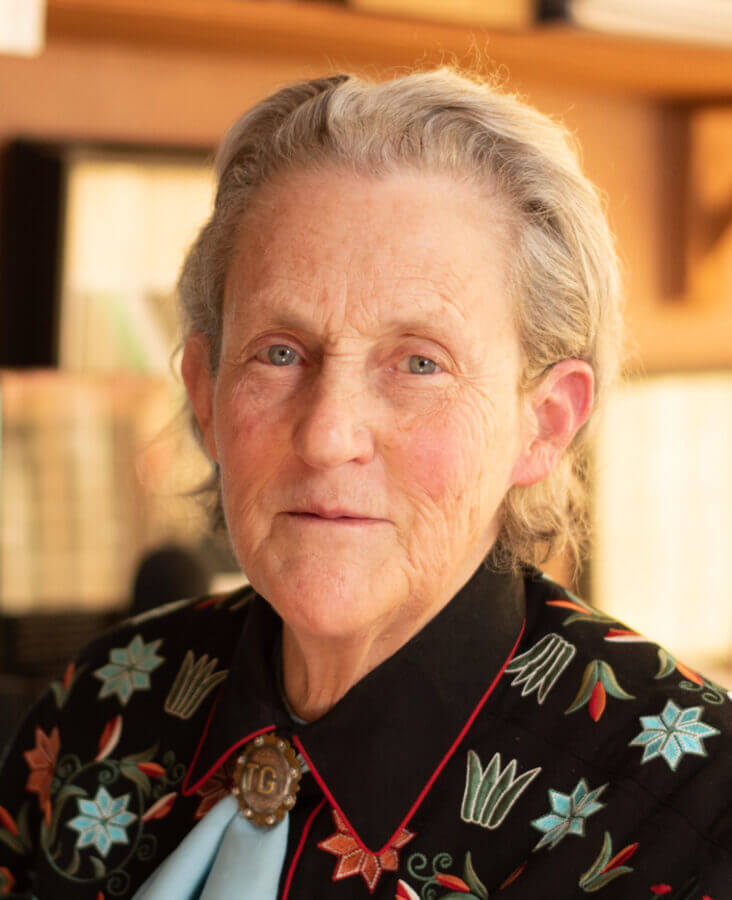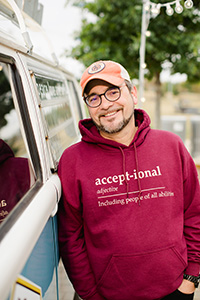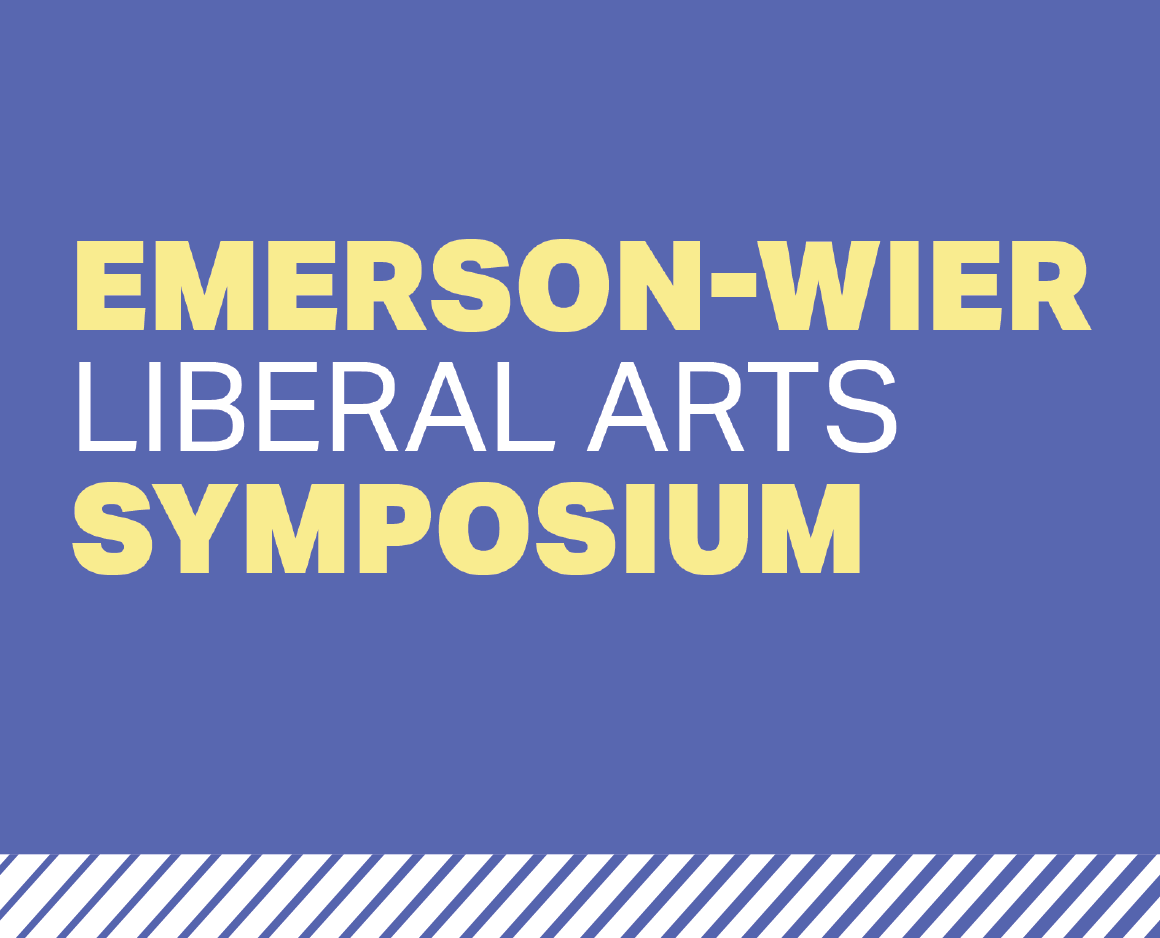2024 Symposium on Neurodiversity
Friday, Feb. 23, 2024
The University of Science & Arts of Oklahoma is excited to host Dr. Temple Grandin, alongside Tim Herbel, as the keynote speakers for the 2024 Emerson-Wier Liberal Arts Symposium focusing on neurodiversity, a derivative of our annual Speaker Series.
 Dr. Grandin did not talk until she was three and a half years old. She was fortunate
to get early speech therapy. Her teachers also taught her how to wait and take turns
when playing board games. She was mainstreamed into a normal kindergarten at age
five. Oliver Sacks wrote in the forward of Thinking in Pictures that her first book
Emergence: Labeled Autistic was unprecedented because there had never before been
an inside narrative of autism. Dr. Sacks profiled Dr. Grandin in his best selling
book Anthropologist on Mars.
Dr. Grandin did not talk until she was three and a half years old. She was fortunate
to get early speech therapy. Her teachers also taught her how to wait and take turns
when playing board games. She was mainstreamed into a normal kindergarten at age
five. Oliver Sacks wrote in the forward of Thinking in Pictures that her first book
Emergence: Labeled Autistic was unprecedented because there had never before been
an inside narrative of autism. Dr. Sacks profiled Dr. Grandin in his best selling
book Anthropologist on Mars.
Dr. Grandin became a prominent author and speaker on both autism and animal behavior. Today she is a professor of Animal Science at Colorado State University. She also has a successful career consulting on both livestock handling equipment design and animal welfare. She has been featured on NPR (National Public Radio) and a BBC Special – "The Woman Who Thinks Like a Cow". She has also appeared on National TV shows such as Larry King Live, 20/20, Sixty Minutes, Fox and Friends, and she has a 2010 TED talk. Articles about Dr. Grandin have appeared in Time Magazine, New York Times, Discover Magazine, Forbes and USA Today. HBO made an Emmy Award winning movie about her life and she was inducted into the American Academy of Arts and Sciences in 2016.
When she was young, she was considered weird and teased and bullied in high school. The only place she had friends was activities where there was a shared interest such as horses, electronics, or model rockets. Mr. Carlock, her science teacher, was an important mentor who encouraged her interest in science. When she had a new goal of becoming a scientist, she had a reason for studying. Today half the cattle in the United States are handled in facilities she has designed.
 Tim Herbel is the founder of the non-profit, Not Your Average Joe (NYAJ), Oklahoma
City’s Employer of the Year for 2022, an inspiring coffee shop and cafe with six locations
in Oklahoma dedicated to reducing the unemployment of those with intellectual, developmental
or physical disabilities. NYAJ employs over 100 students and adults with special needs
in side by side inclusionary employment that is meaningful and customer facing while
also providing opportunities for continuing education and social engagement.
Tim Herbel is the founder of the non-profit, Not Your Average Joe (NYAJ), Oklahoma
City’s Employer of the Year for 2022, an inspiring coffee shop and cafe with six locations
in Oklahoma dedicated to reducing the unemployment of those with intellectual, developmental
or physical disabilities. NYAJ employs over 100 students and adults with special needs
in side by side inclusionary employment that is meaningful and customer facing while
also providing opportunities for continuing education and social engagement.
NYAJ’s team includes five Special Coffee Association certified coffee roasters including the first female SCA certified roaster in Oklahoma and the first Native American female SCA certified roaster in the U.S. In addition to award winning coffee, NYAJ serves exceptional pastries, delectable food, and homemade ice cream. They have catered for the Oklahoma Governor’s Mansion, OU Athletics, and Sylvester Stallone. Their staff is exceptional and their mission is to be accept-ional: to include people of all abilities. NYAJ employs those with Autism Spectrum Disorder, Traumatic Brain Injury, Down Syndrome, William’s Syndrome, hearing or vision loss and helps the world see that they are just differently abled. Tim and the NYAJ team enjoy traveling to businesses and schools teaching on the importance of inclusion for people of all abilities and how it helps individuals and organizations in their own learning and earning. Learn more about NYAJ online or on Instagram @NYAJ.coffee.
Tim is a two time graduate of Oklahoma Christian University with degrees in ministry and has served professionally as a pastor, worship leader, teacher, professor at OCU and financial consultant prior to his work as the executive director at NYAJ. He has spent time abroad serving in Greece, Singapore, Germany, Switzerland and Uganda. Tim is also an NCAA sports arena announcer in the OKC area and has called for OU Softball in addition to his regular service as the voice of Oklahoma Christian Basketball and Volleyball. Most recently, Tim was selected for a Human Rights Award for his dedication to social justice in Oklahoma for those marginalized due to disabilities. He is married to Lynn and is the proud dad of Kinsey, step-dad of David and host-dad of German daughters, Charlotte, Paula, Lya, Linnea and Sophie. He loves to read, sing and solve problems. On occasion, he’s been known to create problems as well.
- 3:30 - 4:10 p.m. SOLD OUT
Tim Herbel Master Class: The Journey to Building a Successful Non-Profit and Business in Oklahoma in Davis Hall Amphitheater - 4:15 - 5 p.m. SOLD OUT
Temple Grandin Master Class: Animal Welfare in Agriculture in Davis Hall Amphitheater - 4:30 - 6 p.m.
Temple Grandin books will be available for sale outside of Te Ata Auditorium - 5 - 6 p.m.
Break (Charcuterie Boards/Wine Available on the landing of Davis Hall Amphitheater, outside of the observation deck of the amphitheater) - 6 p.m. SOLD OUT
Emerson-Wier Symposium begins in Te Ata Auditorium
- Tim Herbel: Inclusive Employment for the Neurodiverse and its Social and Economic Impact—The Work of Not Your Average Joe
- Dr. Temple Grandin: Autism
- Moderated Q&A with Dr. Temple Grandin and Tim Herbel
- 8:10 p.m.
Event Concludes - 8:10 - 8:40 p.m.
Dr. Temple Grandin Book Signing (Front of stage)
The Symposium is located in Te Ata Auditorium on the second floor of Troutt Hall. The Master Classes are located in Davis Hall Amphitheatre.
The Emerson-Wier Legacy
The liberal arts symposium series is funded in part by the Jack Wier, Jr. and Nance Foules Wier Fund for Faculty Development, the Gladys Anderson Emerson Fund for Interdisciplinary Learning and Research.
A 1945 Oklahoma College for Women alumna, Nance Wier maintains that “teachers, not buildings,” promote effective learning. In 2005, she established the Jack Wier, Jr. and Nance Foules Wier Faculty Enhancement Endowment that provides funds to encourage faculty research and learning opportunities, such as the Emerson-Wier Liberal Arts Symposium.
Her most notable achievement in science may have been to isolate Vitamin E, but nutrition expert Gladys Anderson Emerson is better known at her alma mater as a global ambassador for the liberal arts. Dr. Emerson earned two degrees at the Oklahoma College for Women in 1925 — one a bachelor of arts in history and English, and the other a bachelor of science in physics and chemistry. She then gained a Master of Arts degree in history and economics at Stanford University. She went from there to the University of California for her doctorate. Dr. Emerson was the American Chemical Society’s 1952 recipient of the Garvan Medal, an annual award recognizing distinguished service to chemistry by women chemists.
During a professional career that spanned 50 years, Dr. Emerson lectured and conducted research at some of the most prominent facilities in the United States. Her articles — more than 100 of them — appeared in leading research journals throughout the world. Upon her death in 1984, she left a bequest to USAO for interdisciplinary learning opportunities and research.


